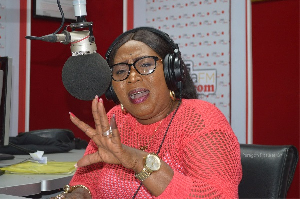The Ghana Statistical Service (GSS) on Thursday said the final results of the 2010 Population and Housing Census would be released on Thursday, May 31, 2012.
A statement to the Ghana News Agency in Accra signed by Mr. Elvis Adanyina, a Director at GSS explained that the service had completed the final phase of the data processing.
The GSS released the provisional results of the Census in February, 2011, while they continued with the processing of the detailed population data. “We have now successfully completed the process”, said the statement.
The statement said in connection with this, the GSS will on Thursday, May 31, meet-the-press at 10:00 hours at the Conference Hall of the Ministry of Information to release the final summary of results of the 2010 Population and Housing Census.
Originally, the results were scheduled to be released on March 31, 2012 but postponed to April 30, due to what GSS described as initial field challenges that impacted negatively on the data collection process.
The GSS dismissed allegations that the release of the census results was being delayed to favour certain political interests.
Some interest groups, including the Danquah Institute (DI), have mounted pressure on the GSS to release the census results early.
The 2010 Population and Housing Census was held in September 2010, and according to a GSS document obtained by the GNA, the process was such that after the census, the post-enumeration stage entailed grooming and preparation of questionnaires for scanning, verification of data, generation of tables and conversion into a format that could be used for data analysis.
Provisional results of the 2010 Population and Housing Census which were released on February 3, 2011 put Ghana’s population at 24.2 million.
The current national population represents a 28.1 per cent increase over the 2000 population figure of 18.9 million, meaning that the country’s population has been growing at an annual rate of 2.4 per cent since 2000.
According to the figures, there were more females than males, with the population of males standing at 11,801,661, while that of females is pegged at 12,421,770, representing 48.7 and 51.3 per cent respectively, of the total population.
With respect to the regional distribution, the Ashanti Region has the highest population of 4,725,046, up from the 2000 population figure of 3,612,950, followed by the Greater Accra Region, with a population of 3,909,764, up from the 2000 population figure of 2,905,726, while the Upper West Region has the lowest population of 677,763, up from the 2000 population of 576,583.**
Business News of Thursday, 24 May 2012
Source: GNA
















